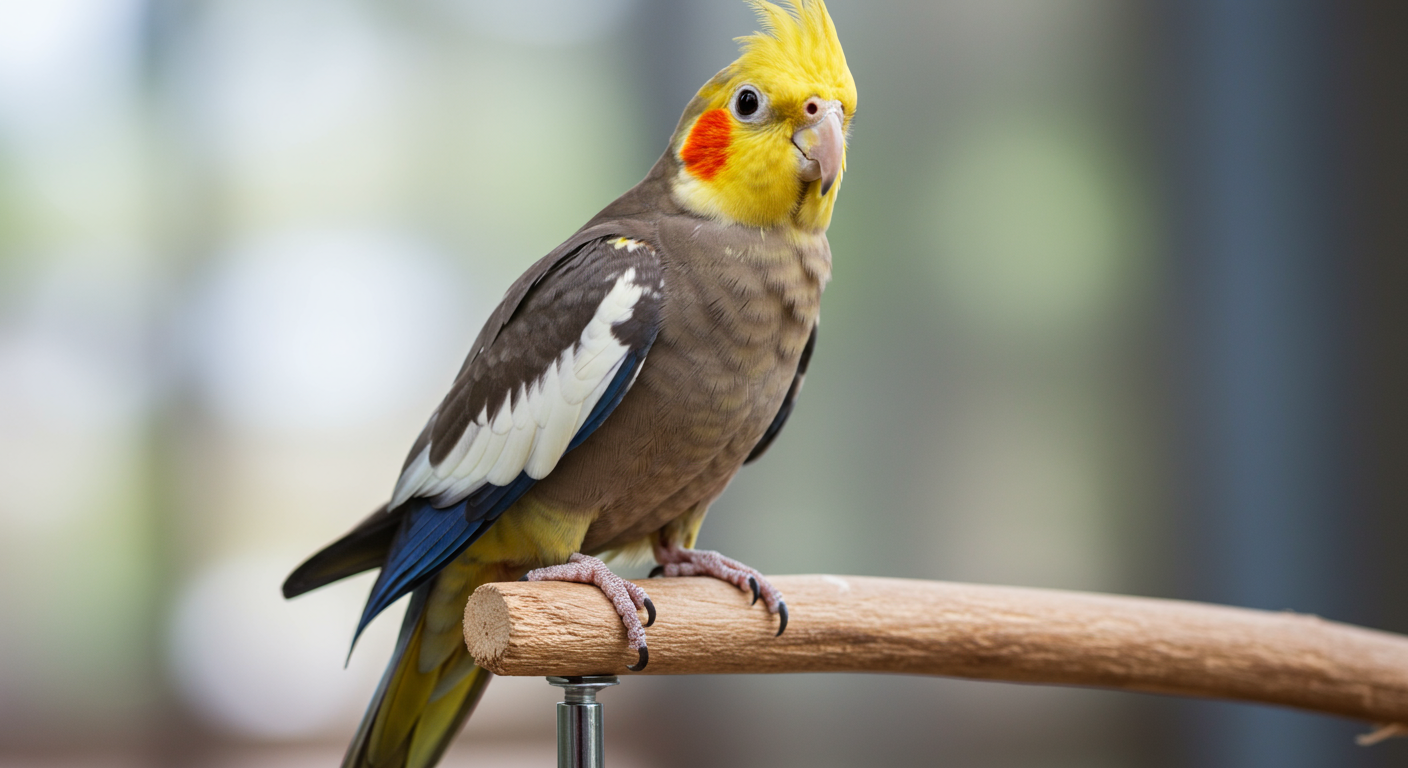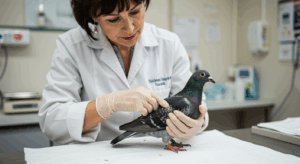As a loving bird owner, your feathered companion’s health is a top priority. Being aware of common bird diseases and disorders is crucial because our avian friends are masters at hiding illness until they are quite sick. Early detection can make a world of difference in successful treatment. So, let’s explore some of the most common health issues that can affect birds in our care.
Crucial Note: If you notice your bird showing any signs of illness, unusual behavior, or anything out of the ordinary, please don’t wait. Seek immediate attention from a qualified avian veterinarian. They are the experts who can properly diagnose and treat your precious pet.
01. Proventricular Dilatation Disease (PDD)
Proventricular Dilatation Disease, often called PDD, is a perplexing and serious condition in birds. It primarily targets the nerves controlling the bird’s gastrointestinal (GI) tract, but it can sometimes affect nerves supplying other organs as well.
You might also hear PDD referred to as “Macaw Wasting Syndrome” or “Parrot Wasting Syndrome.” This is because it’s most frequently diagnosed in larger parrots like Macaws, African Greys, Amazon Parrots, as well as Cockatoos and Conures.
What to Look For (Symptoms of PDD):
- Noticeable weight loss despite eating
- Vomiting or regurgitation
- Changes in the appearance or consistency of droppings
- A swollen or distended crop (the muscular pouch near the throat where food is temporarily stored)
It’s important to know that PDD can be tricky; no single symptom definitively points to it. Sadly, some birds may not show any obvious signs of illness until the disease is quite advanced.
Treatment Focus:
Currently, there’s no cure for PDD. Treatment usually involves nonsteroidal anti-inflammatory drugs (NSAIDs) to manage pain and inflammation. Your vet might also recommend a special, easily digestible diet. These treatments aim to improve the bird’s quality of life and reduce discomfort.
2. Psittacosis (Parrot Fever)
Psittacosis, commonly known as “Parrot Fever,” is a bacterial infection caused by a type of Chlamydia bacteria. It can affect all hookbill birds (parrots, cockatoos, parakeets, etc.). This disease is a concern because it’s highly contagious and can spread from birds to other animals, and even to humans (a zoonotic disease).
What to Look For (Symptoms of Psittacosis):
The symptoms of Psittacosis can be quite general and not specific to this illness alone, which is why a vet visit is crucial. Signs include:
- Difficulty breathing or respiratory distress
- Discharge from the eyes or nostrils
- Loss of appetite (inappetence)
- Loose, watery droppings
- General lethargy or listlessness
Treatment Approach:
The most common treatment for Psittacosis is an antibiotic called tetracycline. This can be administered orally or through injections, as prescribed by your avian vet. An important note: birds undergoing tetracycline treatment should not be given calcium supplements, as calcium can interfere with the medication’s effectiveness.
3. Psittacine Beak and Feather Disease (PBFD)
Psittacine Beak and Feather Disease (PBFD) is a very serious viral illness that can impact all species within the parrot family. It’s sometimes distressingly referred to as “bird AIDS” due to some similarities in how it compromises the immune system. While PBFD is most often seen in birds under two years old, it can strike a bird of any age.
What to Look For (Symptoms of PBFD):
- Significant feather loss
- Abnormal feather development (e.g., misshapen, constricted, or clubbed feathers)
- Absence of powder down (the fine powder produced by some bird species that helps keep feathers conditioned)
- Growths, lesions, or other abnormalities on the beak
- Sometimes, a shiny or discolored beak
If your bird displays these symptoms, your veterinarian will likely perform a skin and/or feather biopsy to confirm the diagnosis.
Treatment Focus:
Unfortunately, there is currently no cure for PBFD. A veterinarian will typically recommend supportive care. This focuses on managing pain, preventing secondary infections, and ensuring the bird is as comfortable as possible.
4. Polyomavirus
Polyomavirus is another viral disorder that primarily affects caged birds, with parrots being particularly susceptible. Newborn and juvenile birds (nestlings and fledglings) are at the highest risk, and for them, the disease is often fatal.
What to Look For (Symptoms of Polyomavirus):
- Loss of appetite
- An enlarged or swollen abdomen
- Paralysis or difficulty moving
- Diarrhea
- Sudden death, especially in very young birds
It’s a concerning aspect of Polyomavirus that some birds can be carriers without showing any outward symptoms. These birds can shed the virus, especially during times of stress, posing a significant risk of infection to other birds in the same environment.
Treatment and Prevention:
There is no known cure for Polyomavirus. The disease can progress very rapidly and has a high mortality rate, particularly in young birds. If your bird is in a situation with a high risk of exposure (e.g., regularly interacts with many other birds from different sources), vaccination is available. This can help reduce the risk of your bird contracting the illness. Discuss this with your avian vet.
5. Candida (Candidiasis)
Candida, also known as Candidiasis, is a fungal infection. It’s caused by an overgrowth of yeast (a type of fungus) that is normally present in small, harmless amounts in a bird’s digestive system. This overgrowth can affect the digestive tract of all bird species.
What to Look For (Symptoms of Candida):
- White, cottage cheese-like lesions in and around the mouth, throat, or crop
- Vomiting or regurgitation
- Loss of appetite
- A crop that empties very slowly or feels doughy
- Lethargy or a general lack of energy
Treatment Approach:
The good news is that most Candida infections can be successfully treated with antifungal medications prescribed by your veterinarian. It’s important to note that Candida often develops as a secondary problem when a bird’s immune system is already weakened by another illness or stressor. Therefore, your vet will likely examine your bird thoroughly to identify and treat any underlying conditions as well.
Your Bird’s Health is Paramount
Remember, this guide provides general information, but it’s not a substitute for professional veterinary care. If you ever suspect your pet bird is sick, or if you have any health-related questions, please call your avian veterinarian immediately. They have examined your pet, know its health history, and are the only ones who can make the best recommendations for your feathered family member. Early intervention is often the key to a positive outcome.


